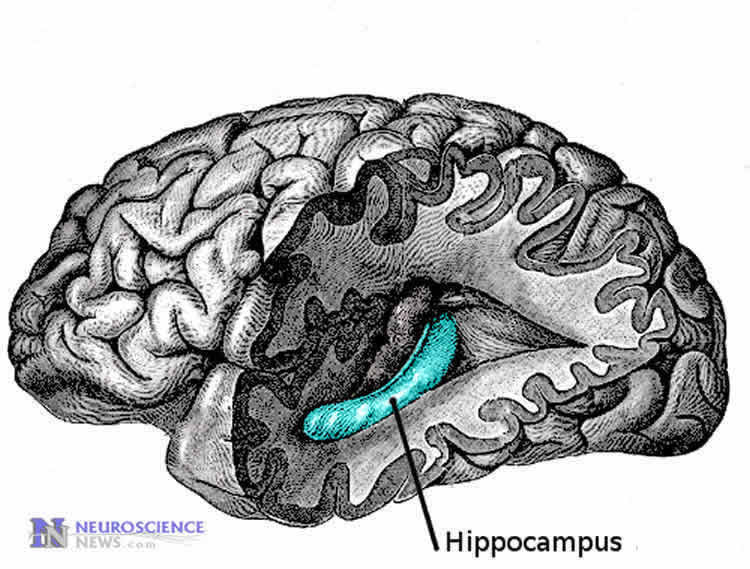Regardless of gender, young adults who have greater aerobic fitness also have greater volume of their entorhinal cortex, an area of the brain responsible for memory. Better aerobic fitness however does not appear to impact hippocampal volume, another area in the brain responsible for memory.
While aerobic fitness is not directly associated with performance on a recognition memory task, the participants with a larger entorhinal cortex also performed better on the recognition memory task. These findings by Boston University School of medicine (BUSM) researchers appear in the journal NeuroImage.
The entorhinal cortex is a brain area known to show early pathology in Alzheimer’s disease, which is characterized by profound memory impairment. Because of the strong association between hippocampal cell growth and exercise in models, previous work on exercise and the brain has not focused on the entorhinal cortex, despite its critical role in learning and memory until now.
The researchers recruited healthy young adults (ages 18-35 years) who underwent a treadmill test to measure aerobic capacity. During this test, the amount of oxygen and carbon dioxide in the participants’ breath as they walked or ran on a treadmill was measured. Participants then underwent magnetic resonance imaging and performed a recognition memory task. Entorhinal and hippocampal volume was determined using a method known as voxel-based morphometry and then regression analysis to examine whether recognition memory and aerobic fitness predicted brain volumes.
“Our results suggest that aerobic exercise may have a positive effect on the medial temporal lobe memory system (which includes the entorhinal cortex) in healthy young adults. This suggests that exercise training, when designed to increase aerobic fitness, might have a positive effect on the brain in healthy young adults,” explained corresponding author and principal investigator Karin Schon, PhD, BUSM assistant professor of anatomy and neurobiology. The researchers point out that unlike previous work done in older adults, in this young adult sample hippocampal volume does not show an association with aerobic fitness.

Researchers said this work could support previous studies that suggest aerobic exercise may forestall cognitive decline in older individuals at risk of dementia, and extends the idea that exercise may be beneficial for brain health to younger adults. “This is critical given that obesity, which has recently been linked with cognitive deficits in young and middle-aged adults, and physical inactivity are on the rise in young adults,” Schon said.
Funding: The research was funded by NIH/National Institute on Aging, Undergraduate Research Opportunities Program at Boston University.
Source: Gina DiGravio – Boston University Medical Center
Image Source: The image is in the public domain
Original Research: Abstract for “Entorhinal volume, aerobic fitness, and recognition memory in healthy young adults: A voxel-based morphometry study” by Andrew S. Whiteman, Daniel E. Young, Andrew E. Budson, Chantal E. Stern, and Karin Schon in NeuroImage. Published online November 26 2015 doi:10.1016/j.neuroimage.2015.11.049
Abstract
Entorhinal volume, aerobic fitness, and recognition memory in healthy young adults: A voxel-based morphometry study
Converging evidence supports the hypothesis effects of aerobic exercise and environmental enrichment are beneficial for cognition, in particular for hippocampus-supported learning and memory. Recent work in humans suggests that exercise training induces changes in hippocampal volume, but it is not known if aerobic exercise and fitness also impact the entorhinal cortex. In animal models, aerobic exercise increases expression of growth factors, including brain derived neurotrophic factor (BDNF). This exercise-enhanced expression of growth hormones may boost synaptic plasticity, and neuronal survival and differentiation, potentially supporting function and structure in brain areas including but not limited to the hippocampus. Here, using voxel based morphometry and a standard graded treadmill test to determine cardio-respiratory fitness (Bruce protocol; VO2 max), we examined if entorhinal and hippocampal volumes were associated with cardio-respiratory fitness in healthy young adults (N = 33). In addition, we examined if volumes were modulated by recognition memory performance and by serum BDNF, a putative marker of synaptic plasticity. Our results show a positive association between volume in right entorhinal cortex and cardio-respiratory fitness. In addition, average gray matter volume in the entorhinal cortex, bilaterally, was positively associated with memory performance. These data extend prior work on the cerebral effects of aerobic exercise and fitness to the entorhinal cortex in healthy young adults thus providing compelling evidence for a relationship between aerobic fitness and structure of the medial temporal lobe memory system.
“Entorhinal volume, aerobic fitness, and recognition memory in healthy young adults: A voxel-based morphometry study” by Andrew S. Whiteman, Daniel E. Young, Andrew E. Budson, Chantal E. Stern, and Karin Schon in NeuroImage. Published online November 26 2015 doi:10.1016/j.neuroimage.2015.11.049






